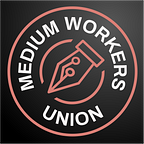Into the Valley
Exclusive Survey Reveals Discrimination Against Visa Workers at Tech’s Biggest Companies
OneZero conducted a 10,000-person poll to shed light on the plight of H-1B workers
Published in
13 min readFeb 24, 2020
This article is part of Into the Valley, a feature series from OneZero about Silicon Valley, the people who live there, and the…
